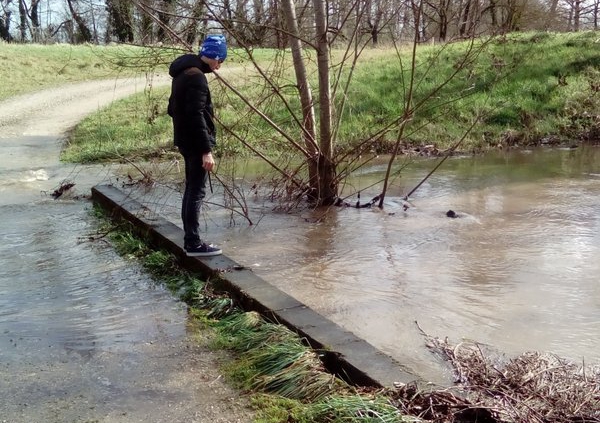Waste water reuse on forestry plantation (Nègrepelisse)
| Partner: local council community Terrasses and Valleée de l’Aveyron (CCTVA)
|
||||||||||||||||||||||
| Project dates: in service since January 2014
|
||||||||||||||||||||||
| Site (region/city or town): department* of Tarn et Garonne, municipality of Nègrepelisse
|
||||||||||||||||||||||
| Scale level (national, regional, local): the area concerned by this treatment plant is the northeast of department
|
||||||||||||||||||||||
| Use/s of the reclaimed water (industrial reuse / green areas reuse/ agriculture reuse / street cleaning reuse / landscape reuse / others): agricultural end landscape reuse
|
||||||||||||||||||||||
| Short Description of the existing project:
CCTVA operates Negrepelisse sludge treatment unit. Sludge is treated by several filters. Between May and October, the treatment plant provides water to a forestry plantation. This operating increases the treatment of effluents and produce firewood for the communal heat production plant. An experimental monitoring has been initiated in 2014 for 3 years, to assess the performances of sludge treatment, tree growth and performance of the irrigation system. |
||||||||||||||||||||||
| Specificities and data (technologies, water quality, flows, etc.): 11 000 m3 of sludge could be treated on 8 filters of common reed (total surface: 2600m²). The solid part stay on the surface and the liquid phase pass through the sand layer, where is operating the microbiologic treatment. In summer time, treated waste water is stocked, then filtered, before to be reuse for watering 3,2 hectares of forestry plantation composed of poplar and eucalyptus. In 2014, 6500 m3 of sludge were treated and almost 5 500 m3 of water were reuse on plantation. | ||||||||||||||||||||||
| Is this the best application for this water? Why?
This is the best way to reuse waste water in accordance with French regulation. The reuse allows decreasing discharge impact in the river, and increasing the growth of trees which means a better way to produce energy. In the future, is there any new expected use for this water reclamation project? There isn’t other use expected because of regulation, but it should be interesting to think about cleaning street. |
||||||||||||||||||||||
| How was the project funded?
The project is born because of lack of sludge treatment plant in north east of department. This situation was source of several issues such as outlawed discharge, difficulties for monitoring sludge spreading plan, transports over long distance. Implementation costs: the cost operation is about 1,9 million euros.
|
||||||||||||||||||||||
| Legislations or other regulatory measures which affected the project:
Reuse waste water has been allowed for testing reason and only if the following conditions were respected:
|
||||||||||||||||||||||
Stakeholders
|
||||||||||||||||||||||
| Innovative aspects (existing and future)
The innovative aspect concerned :
|
||||||||||||||||||||||
| Benefits (social, environmental and economic aspects)
The social benefits haven’t been clearly identified. At the beginning, neighborhood was quiet anxious. He scared mainly of smell coming from sludge. Now, after one year operating, we have never been alerted about any smell production. The treatment plant and water reuse seem well accepted by neighborhood. We can note that the few people who know this project are quiet proud to live on a dynamic territory. The reuse avoids impact of discharge at the summer time, period where the river is the most sensitive. About economics aspects, water reuse signifies more investment (10 to 12% of total cost.) The cost of exploitation is around 5 000 euros per years and includes monitoring and energy consumption. The finality of plantation is to provide fire wood for the communal heat production plant. The production is expected between 15 and 20 tonnes dry matter/hectare after 1 years, which means the biomass production could be 1,5 to 2 higher than that is usually observed on these species without irrigation. Reuse reduces the cost of irrigation which is around 0,5 €/m3. |
||||||||||||||||||||||
| Barriers
The mains obstacles to take account are :
|
||||||||||||||||||||||
| ACTIONS TO DO IN ALERA –to be described carefully-
CCTVA will provide technical data about exploitation (problems, costs, first tendency about irrigation and treatment monitoring, etc.) CCTVA is in deal with Ecofilae to discuss about the meeting in France (date and place.) CCTVA is communicating about Alera project on his web site (site Internet) |
||||||||||||||||||||||
|
|
|
|
||||||||||||||||||||









